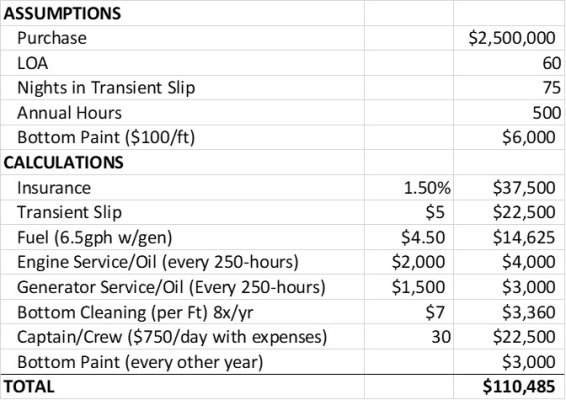JustBob
Senior Member
- Joined
- Apr 12, 2016
- Messages
- 496
- Location
- USA
- Vessel Name
- Mahalo
- Vessel Make
- 2018 Hampton Endurance 658
I'll throw in my two cents worth for free. I have been around and on trawlers since the early 1990's. But have owned my Hampton 658 for the last two years.
If you really feel you will cross oceans, I don't think a twin semi displacement like the Fleming should even be on the table.
I have many friends that are Nordhavn owners. The bonus of having a Nordhavn is the community. They have a strong online presence (the NOG). There is another community of owners and wannabes called the dreamers you can join:
https://groups.io/g/NordhavnDreamers
When cruising here in the PNW they are always looking out for each other. My observation is that there are more Nordhavn's around than any other brand. Being an owner means being part of a larger network of great people. Also, IMO the company itself does more to promote the community than other brands.
This blog: https://comeonrover.com/ is a great intro. Wonderful friends. They plan to cruise the world in their Nordhavn 55, which is what I would target if I were you. As all boats are compromises, this one just "fits."
That boat is large enough to live on. And if you don't end up crossing oceans, so what? It's a great cruiser too.
Best of luck.
If you really feel you will cross oceans, I don't think a twin semi displacement like the Fleming should even be on the table.
I have many friends that are Nordhavn owners. The bonus of having a Nordhavn is the community. They have a strong online presence (the NOG). There is another community of owners and wannabes called the dreamers you can join:
https://groups.io/g/NordhavnDreamers
When cruising here in the PNW they are always looking out for each other. My observation is that there are more Nordhavn's around than any other brand. Being an owner means being part of a larger network of great people. Also, IMO the company itself does more to promote the community than other brands.
This blog: https://comeonrover.com/ is a great intro. Wonderful friends. They plan to cruise the world in their Nordhavn 55, which is what I would target if I were you. As all boats are compromises, this one just "fits."
That boat is large enough to live on. And if you don't end up crossing oceans, so what? It's a great cruiser too.
Best of luck.








